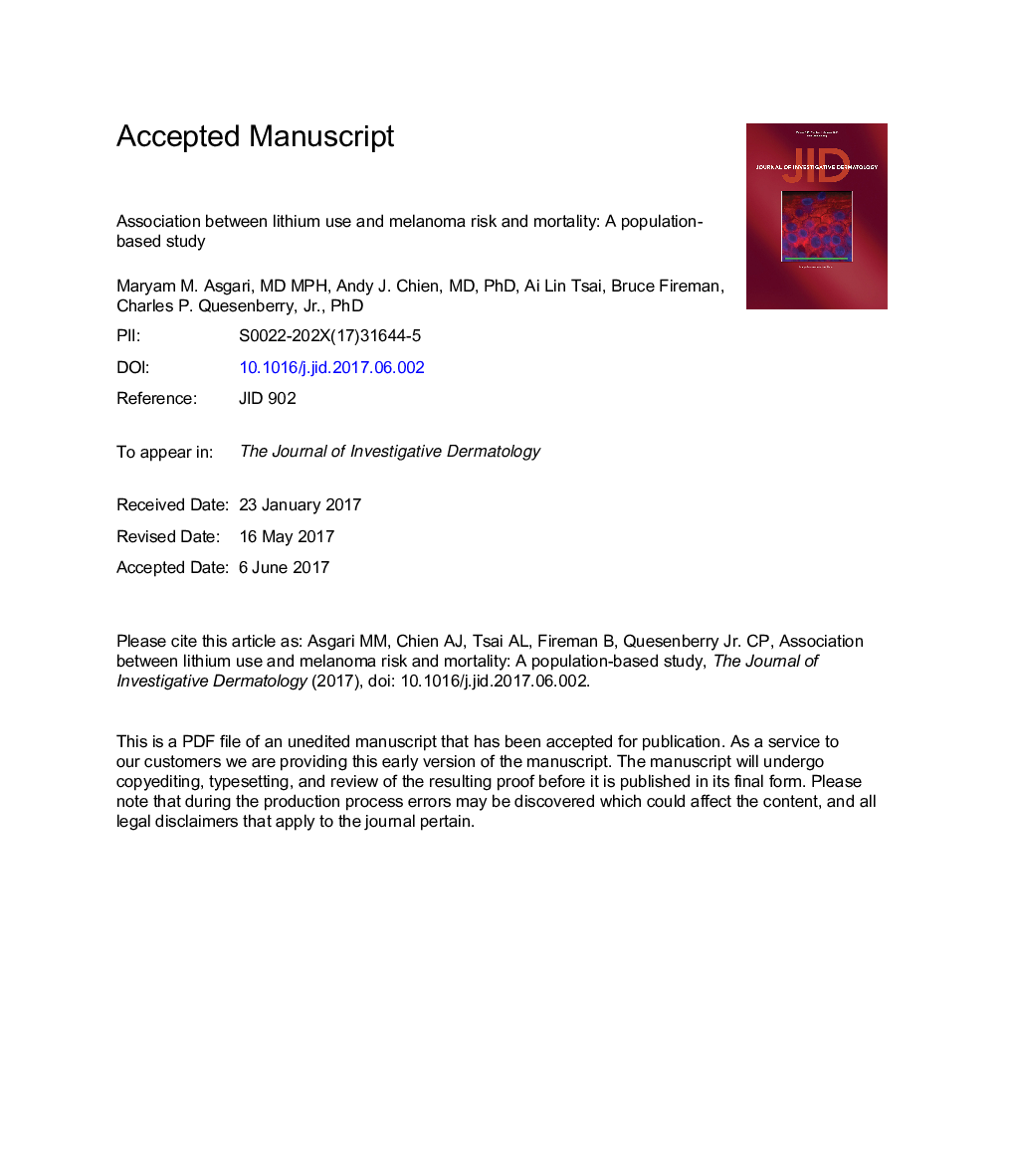| Article ID | Journal | Published Year | Pages | File Type |
|---|---|---|---|---|
| 8716334 | Journal of Investigative Dermatology | 2017 | 17 Pages |
Abstract
Laboratory studies show that lithium, an activator of the Wnt/Ã-catenin signaling pathway, slows melanoma progression, but to our knowledge no published epidemiologic studies have explored this association. We conducted a retrospective cohort study of adult white Kaiser Permanente Northern California members (n = 2,213,848) from 1997-2012 to examine the association between lithium use and melanoma risk. Lithium exposure (n = 11,317) was assessed from pharmacy databases, serum lithium levels were obtained from electronic laboratory databases, and incident cutaneous melanomas (n = 14,056) were identified from an established cancer registry. In addition to examining melanoma incidence, melanoma hazard ratios and 95% confidence intervals for lithium exposure were estimated using Cox proportional hazards models, adjusted for potential confounders. Melanoma incidence per 100,000 person-years among lithium-exposed individuals was 67.4, compared with 92.5 in unexposed individuals (P = 0.027). Lithium-exposed individuals had a 32% lower risk of melanoma (hazard ratio = 0.68, 95% confidence interval = 0.51-0.90) in unadjusted analysis, but the estimate was attenuated and nonsignificant in adjusted analysis (adjusted hazard ratio = 0.77, 95% confidence interval = 0.58-1.02). No lithium-exposed individuals presented with thick (>4 mm) or advanced-stage melanoma at diagnosis. Among melanoma patients, lithium-exposed individuals were less likely to suffer melanoma-associated mortality (rate = 4.68/1,000 person-years) compared with the unexposed (rate = 7.21/1,000 person-years). Our findings suggest that lithium may reduce melanoma risk and associated mortality.
Keywords
Related Topics
Health Sciences
Medicine and Dentistry
Dermatology
Authors
Maryam M. Asgari, Andy J. Chien, Ai Lin Tsai, Bruce Fireman, Charles P. Jr.,
